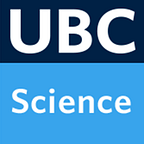Super cool physics at very cold temperatures
Get a glimpse of some of the ‘coolest’ labs at UBC where researchers are probing the mysterious properties of materials under ultra-cold conditions.
By Dr. Sarah Burke, Stewart Blusson Quantum Matter Institute at UBC Science
Ever been so cold you felt like you could hardly move? It’s not just you. Atoms and molecules feel it too. Part of why we perform experiments inside our low-temperature cryostats is so the atoms and molecules don’t move around so much. At room temperature, single atoms and molecules sitting on a surface whiz around too fast to see. When they’re cold they stay put and we can study how their electrons are arranged, and how molecules react and interact with each other.
When things get really cold
When we cool down water below 0˚C, it freezes into ice. The transition from water to ice is called a phase change. When we cool down already solid materials — like aluminum or more complex materials like yttrium barium copper oxide — to extremely low temperatures, we also see phase changes. Like when water freezes, the interactions between the electrons become stronger than their kinetic energy. Sometimes this looks like a freezing transition, where electrons can no longer move freely. Sometimes electrons pair off and condense into a superconducting state with zero resistance. Materials in this state are useful in magnetic resonance imaging (MRI), cell-phone towers, and electrical generators.
The competition between this zoo of possible phases is a major research focus of the Stewart Blusson Quantum Matter Institute at UBC.
Sharpening the picture
The scanning tunnelling microscope we use to look at atoms and molecules uses electrons to examine surfaces of materials and their electronic states. Because thermal energy allows electrons to spread out energetically, working at higher temperatures blurs the details. In order to sharpen our picture of the electronic states, we need to cool down the electrons that we use to measure the electronic states in the sample, restricting them to a tighter energy range.
So how cold do we go? Most of the time we work at approximately 4.2 Kelvin, the boiling point of helium, equivalent to -268.95ºC, just 4˚C above absolute zero. The boiling of liquid helium works to keep things cold because heat transfers from our instrument into the liquid to change it to a higher entropy state (gas). When we need to get colder than that lowest boiling point to reach some of those interesting electronic phases, we need to play different tricks with entropy — a measure of the disorder of a system — but all refrigerators boil down to this basic idea that we create a sink for entropy to cool the thing we’re interested in.
Scanning tunnelling microscopy and atomic force microscopy are versatile techniques, and we use them to investigate a pretty broad range of materials. Some of the coolest things we’ve looked at lately include the reactivity of nanostructures, the dynamics and spatial distribution of electrons between molecules that can serve as solar cells, light emission from single molecules that are promising organic LEDs, and topological surface states that have peculiar behaviours because of the symmetries of the material. These fundamental studies of the weird and wonderful physical properties of new materials are an important underpinning for future device development.
History gives us fascinating examples of fundamental studies turned technological advances like OLEDS which are now increasingly appearing in displays, giant magnetoresistance that led to high-density magnetic storage, and the silicon transistor that drives the device you’re reading this on.
We don’t have a crystal ball to see how our fundamental research will lead to future technologies — clean energy solutions, quantum computing platforms, or something that hasn’t even been dreamed up yet. But we do know that fundamental materials research has a way of bursting forth with exciting, new ideas. And that’s why ‘chilling’ around the lab is a great idea.
Follow UBC Science on Twitter, Facebook, Instagram, LinkedIn or subscribe to our newsletter.
